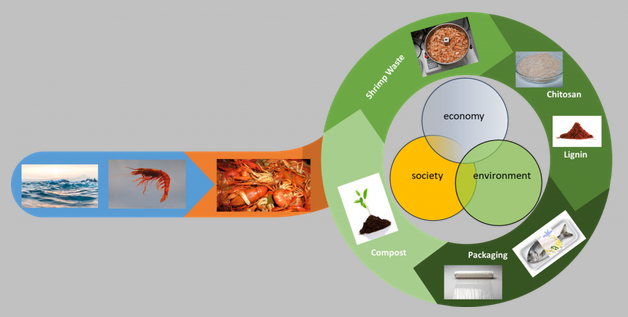Fish 4 Fish Project Coordinator Rebecca Pogni, Professor of Physical Chemistry at the Department of Biotechnology, Chemistry and Pharmacy at the University of Sienna spoke with Robert Miskuf a representative of the Biobridges project about the Fish4Fish project, how it promotes transition towards a fossil free future and the value addition occasioned by the Fish 4 Fish packaging.

What is the Fish 4 Fish Project main goal?
The goal of the project is to produce an active packaging material starting from crustacean wastes like shrimps, crabs and lobster. We want to produce material to enhance the shelf life of fish products. It is biodegradable and home compostable which implies that we can reduce the plastics for packaging and in the environment. We represent a special case in which fish and marine waste are used to produce higher added value products to be used in the same sector - fisheries.
How does your project promote transition towards a fossil free future?
According to the EU strategy for plastics in the circular economy, by 2030 all plastics packaging on the EU market should have been replaced by recyclable and reusable material. In this context, we can make a contribution to reducing the use of common plastics and marine litter.
Tell us about the added value of the Fish4Fish packaging?
In the end we will produce trays and film for fish packaging. The material is made by chitosan obtained by chitin which is the main component of crustacean exoskeletons and lignin nanoparticles. Chitosan has important particles because it shows antioxidant and antimicrobial properties which can be used as fertilizers and to enhance plant growth. Our packaging material has important properties to enhance the shelf life of fish products and this represents economic support for the fishery sector as a sustainable solution for the environment and consumers. It can also be used for the packaging of other perishable foods.
The End of Life of the project. How do you manage that?
The project can reduce the marine litter and also reduce carbon dioxide emissions as the package is processed at zero waste and also contributes to soil health.
More information is available HERE.